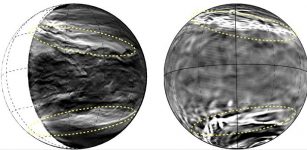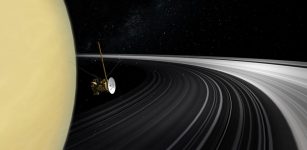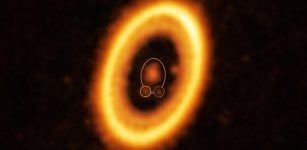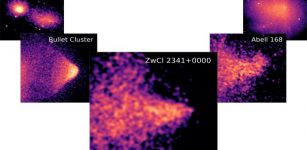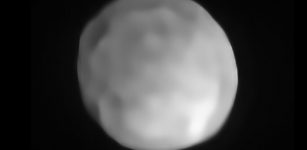Smith Cloud Will Crash Into The Milky Way Galaxy In 30 Million Years
MessageToEagle.com – Since astronomers discovered the Smith Cloud, a giant gas cloud plummeting toward the Milky Way, they have been unable to determine its composition, which would hold clues as to its origin.
- How did the cloud get to where it is now?
- What calamitous event could have catapulted it from the Milky Way’s disk, and how did it remain intact?
- Could it be a region of dark matter — an invisible form of matter — that passed through the disk and captured Milky Way gas?
For now these questions cannot be answered, however, astronomers from the University of Notre Dame have now determined that the cloud originated in the Milky Way’s outer edges and not in intergalactic space as some have speculated.
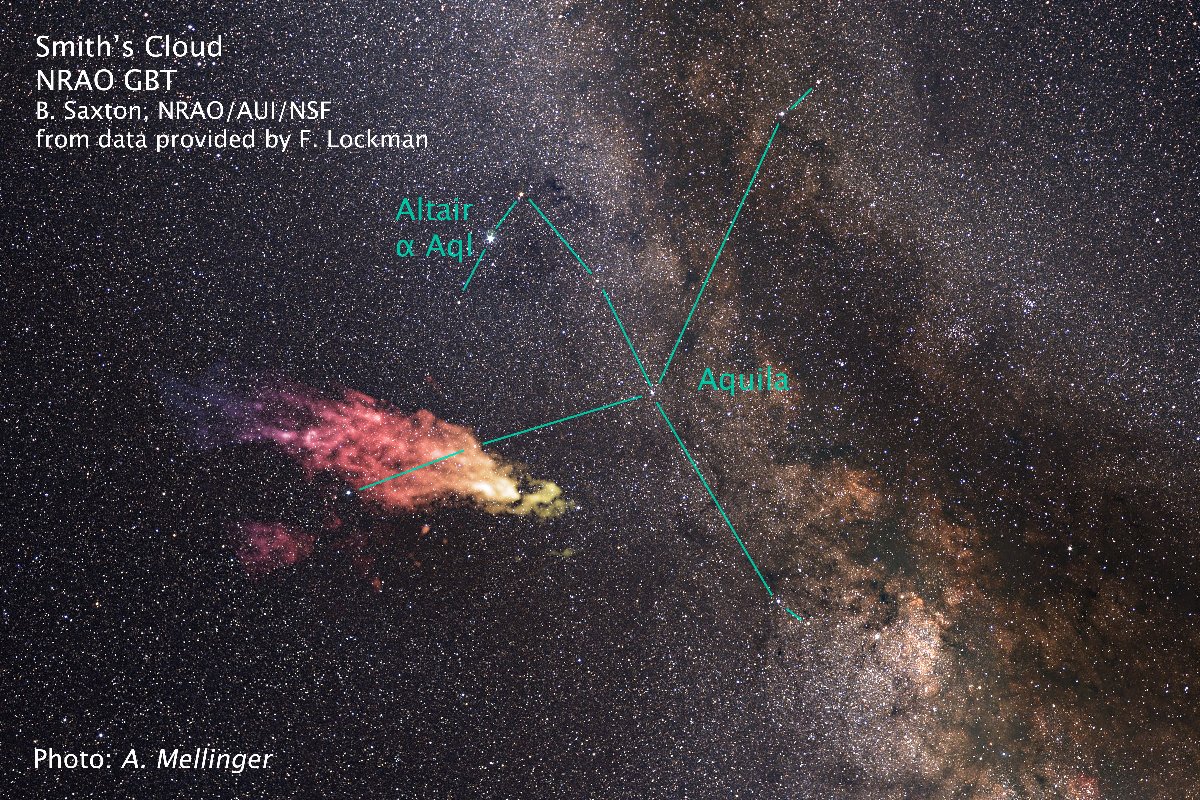
The Smith Cloud, discovered in the 1960s, is the only high-velocity cloud in the galaxy for which its orbit is well-determined, thanks in particular to studies with radio telescopes like the Green Bank Telescope (GBT).
It is traveling at nearly 700,000 miles per hour and is expected to crash into the Milky Way disk in 30 million years. If it were visible, the Smith Cloud would have an apparent size of about 30 times the diameter of the moon from tip to tail.
Astronomers long thought that the Smith Cloud might be some starless galaxy or gas falling into the Milky Way from intergalactic space. If that were the case, the cloud composition would be mainly hydrogen and helium, not the heavier elements made by stars.
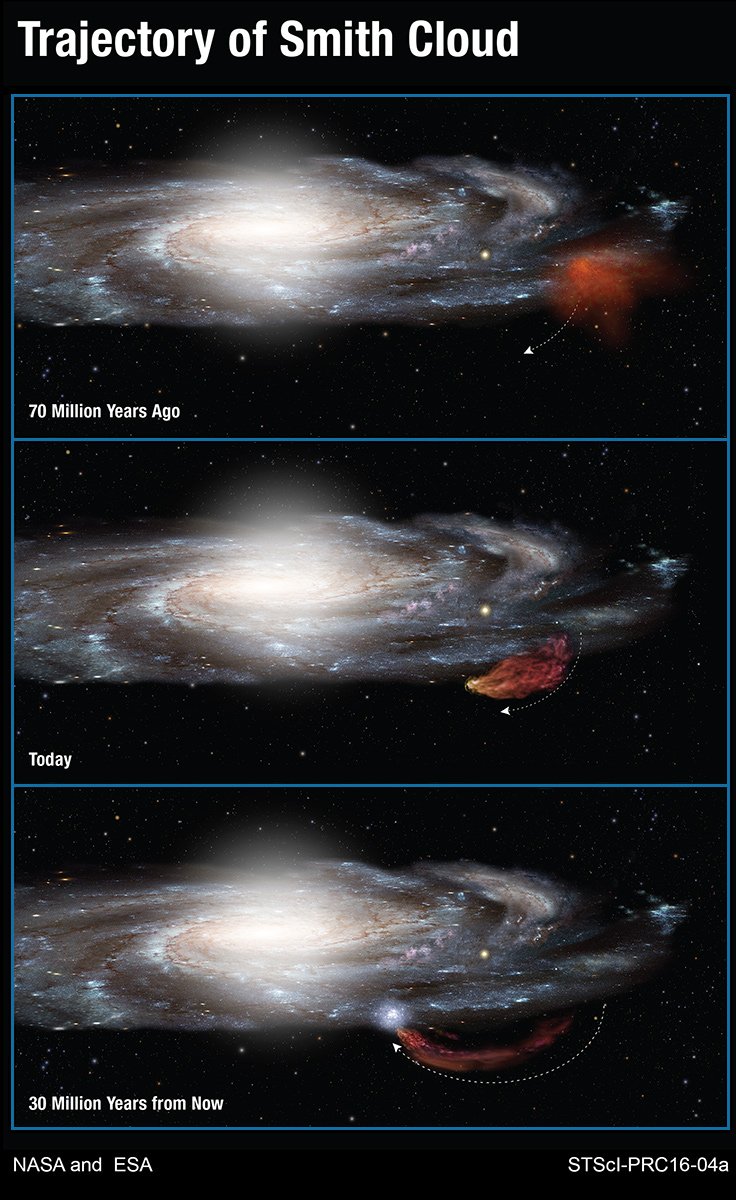
Astronomers observed the cloud using the Hubble Space Telescope, to determine for the first time the amount of heavier elements relative to hydrogen in the Smith Cloud.
They looked specifically for absorption from the sulfur element, which is a good gauge of how many heavier elements reside in the cloud.
“By measuring sulfur, you can learn how enriched in sulfur atoms the cloud is compared to the Sun,” said team leader Andrew Fox of the Space Telescope Science Institute in Baltimore.
The team then compared Hubble’s sulfur measurements to hydrogen measurements made by the GBT.
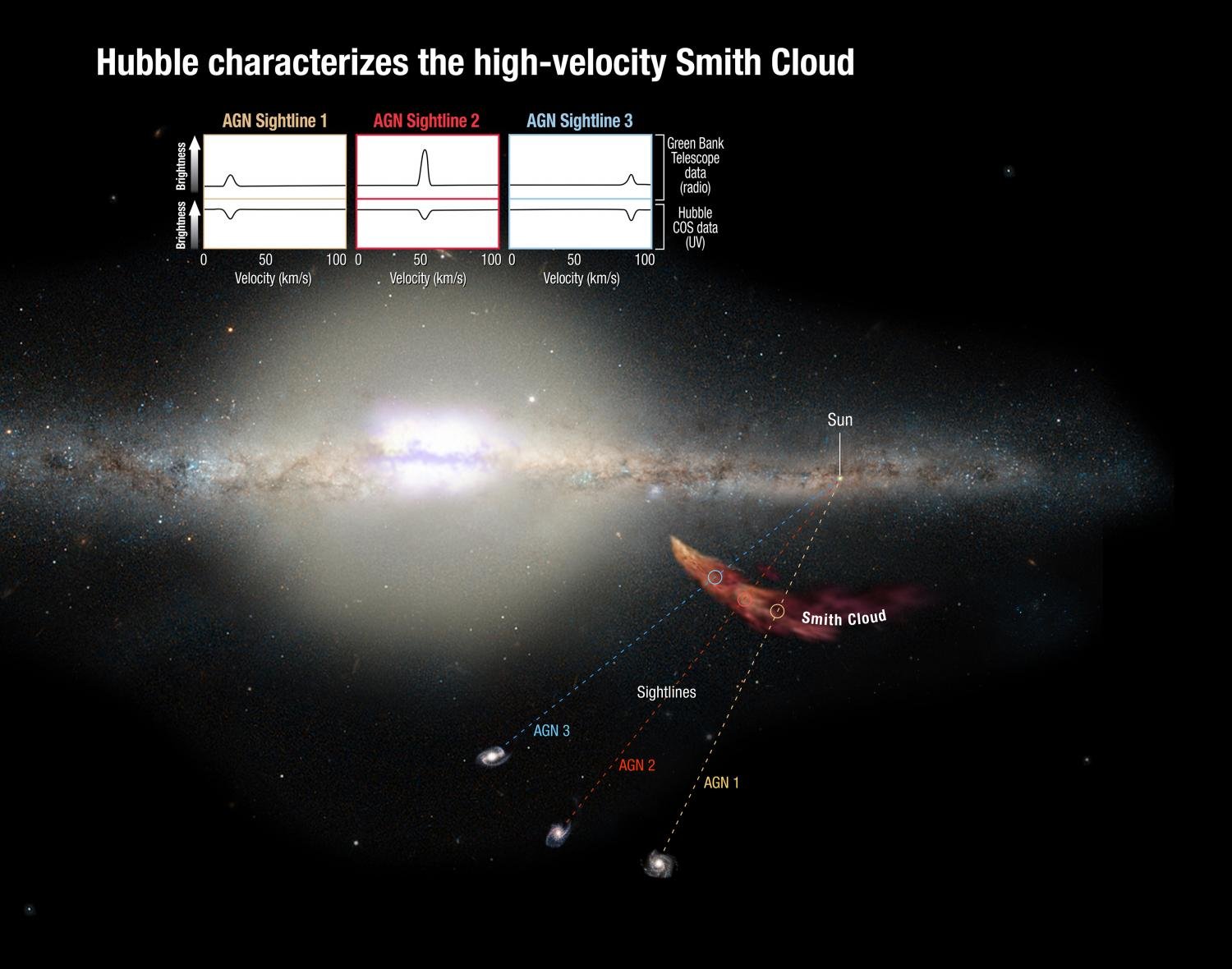
The astronomers found that the Smith Cloud is as rich in sulfur as the Milky Way’s outer disk, a region about 40,000 light-years from the galaxy’s center and about 15,000 light-years farther out than our sun and solar system are. This means that it was polluted by material from stars.
Instead, the cloud appears to have had an intimate relationship with the Milky Way, but was somehow ejected from the outer Milky Way disk about 70 million years ago and is now boomeranging back onto its disk.
Astronomers believe the Smith Cloud, has enough gas to generate two million suns when it eventually hits the Milky Way disk.
“We have found several massive gas clouds in the Milky Way halo that may serve as future fuel for star formation in its disk, but, for most of them, their origins remain a mystery.
The Smith Cloud is certainly one of the best examples that shows that recycled gas is an important mechanism in the evolution of galaxies,” said Nicolas Lehner, University of Notre Dame astrophysicist.
The team’s research appears in the January 1, 2016, issue of The Astrophysical Journal Letters.
MessageToEagle.com
source: University of Notre Dame

